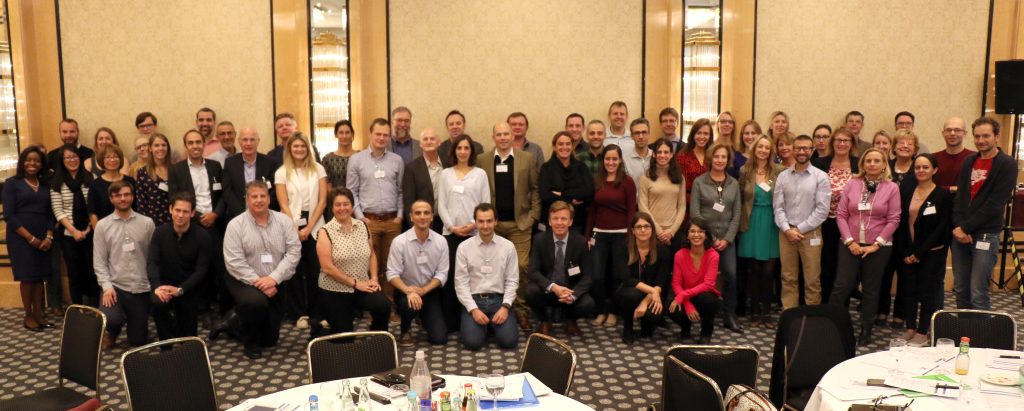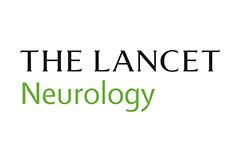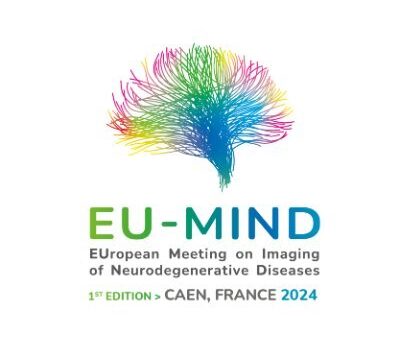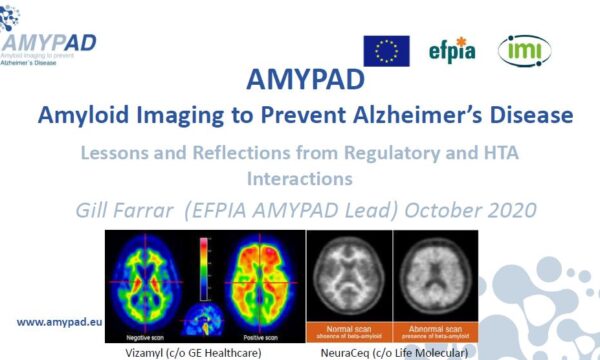On 8 and 9 October, the “Amyloid imaging to Prevent Alzheimer’s disease” (AMYPAD) consortium gathered for its General Assembly (GA) Meeting in Berlin, Germany. The event was sponsored by Life Molecular Imaging. The meeting provided a chance to gather everyone who work on the AMYPAD project to discuss progress and future activities.
The first day placed the emphasis squarely on the two AMYPAD sub-studies. The GA meeting started with Andrew Stephens (Life Molecular Imaging), Frederik Barkhof (VUmc) and Gill Farrar (GE Healthcare) welcoming more than 60 attendees. They introduced the meeting objectives and reported the two-year progress.
After that, a session was dedicated to the Prognostic and Natural History Study (PNHS) including its design and scientific challenges. The ethical approval for the AMYPAD PNHS study has been obtained in Amsterdam. There was also an announcement that the second participant has consented for the study and that the First Patient in is planned for October 2018. Over the past quarter, the VUmc team has taken on the role of study sponsor and started to coordinate other sites in their participation into this study. The preparatory work was shared with the consortium members. The operational aspects of the prognostic study were presented including the timelines and enrolment rates, the study status and the site requirement. There was also an update of the EPAD study as AMYPAD will leverage a Europe-wide network in close collaboration with EPAD to study the earliest stages of Alzheimer’s disease in a longitudinal fashion. EPAD now has 20 sites enrolling and more than 1,070 research participants screened.
The afternoon of the first day hosted a session on the Diagnostic and Patient Management Study(DMPS). The DPMS protocol is now approved in Switzerland, Netherlands, Spain and Sweden. The site initiation performed in Geneva and Amsterdam has currently 45 participants in AMYPAD DPMS spread on both active sites. These two centres that have already started recruitment in the DPMS have shared their recruitment experiences and it was valuable to the centres that are preparing to open as they will certainly build their practice upon lessons learned from opened centres.
On the second day, an overview of relatives initiatives such as the IDEAS study and the ABIDE project were presented. A presentation was delivered on the imaging dataflows and quantification pipelines including an update of the work done within the WP2 (Tracer delivery, PET scanning and image analysis). After that the WP5 (Monitoring treatment: Quantify patient-specific efficacy) gave an overview of their activities conducted within the past two years and highlighted the existing datasets and the first results. There was also a presentation on the regulatory strategy update, the ethics in AMYPAD and the AMYPAD communication. Before the wrap-up session, reporting and financials were also reminded. Gill Farrar and Frederik Barkhof then recapitulated the days’ discussions and presented the next steps of the project, after which the GA meeting ended.
It was an interactive general assembly meeting with a lot of discussions and engagements. As we enter a new busy period, the team is looking forward to have all approvals in place to take on the next steps ahead.
Take a look on the video below to hear some AMYPAD members talking about the general assembly.



